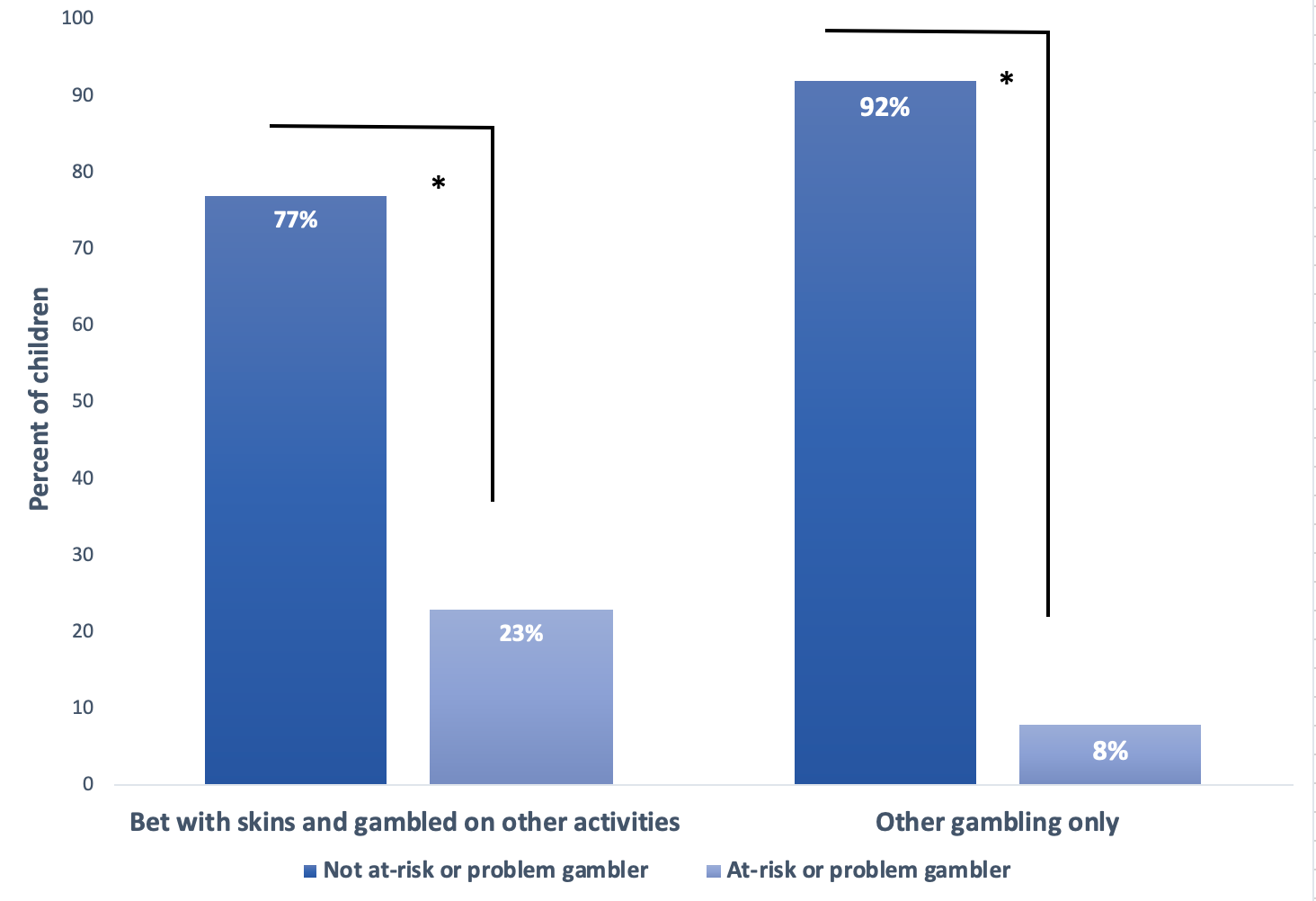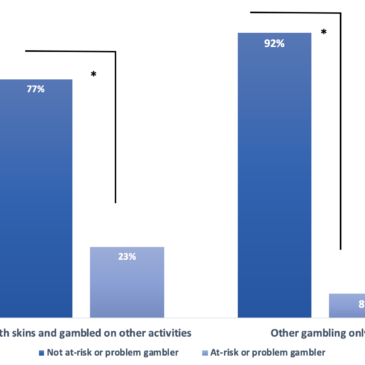Because of the COVID-19 pandemic, kids are spending more and more time in front of screens, including playing video games. Caregivers might be wary of prolonged screen time and sedentary behavior. Should they also be worried about new gambling-like features embedded in some video games? This week, the WAGER reviews an article by Heather Wardle that looked at the convergence of skin gambling in video games and participation in other gambling activities, and whether these gambling activities are associated with being at risk for problem gambling. Skins are graphic or audio downloads that can change the appearance of an item in a video game and players can use skins as tokens to bet or gamble with during the game.
What was the research question?
Are children who engage in skin gambling in video games more likely to engage in other forms of gambling, and how does participation in these gambling activities relate to being an at-risk or problem gambler?
What did the researchers do?
Researchers conducted a secondary data analysis of the 2017 Youth Gambling Survey, which collected information from a random sample of 2,881 children between the ages of 11 and 16 years old in England and Wales. The children reported skin betting behavior, other gambling behaviors, and provided sociodemographic information. Children were categorized into one of four groups based on their past-month behavior: those who had bet with skins and gambled on other activities, those who had only bet with skins, those who had only gambled on other activities, and those who had not participated in either activity. Wardle tested whether certain types of gambling were associated with skins gambling and if skins gambling was associated with problem or at-risk gambling once other forms of gambling were taken into account.
What did they find?
Overall, 7% of kids reported that they gambled with skins in the past month and 16% reported that they engaged in other forms of gambling in the past month. In fact, betting with skins was the second most common form of gambling reported. Boys were more likely than girls to engage in any gambling, including skin betting, and the likelihood of reporting skin betting and other gambling increased with age. Of the children who reported betting on skins, 39% also reported engaging in other gambling activities. Kids who engaged in skin betting and other gambling activities had higher rates of at-risk/problem gambling than kids who only engaged only in other kinds of gambling (see Figure). However, when all of the kids’ demographic and gambling characteristics were considered in combination, skin betting was not associated with increased risk for at-risk gambling.

Figure. Percent of children who were not at-risk or problem gamblers and children who were at-risk or problem gamblers based on the gambling activities they reported engaging in. * indicates statistically significant differences. Click image to enlarge.
Why do these findings matter?
It is important to understand how children’s engagement in skin gambling while playing video games may lead to other gambling activities. These findings can be used to create problem gambling screenings and prevention training that target children who report skin gambling and another form gambling. This would hopefully prevent further development of problem gambling and identify children who may already be an at-risk or problem gambler. In addition, game developers should consider putting age labels or warnings for parents to understand what their children are being exposed to when they play these games for hours on end.
Every study has limitations. What are the limitations of this study?
Children were only asked about six main forms of gambling and were asked to indicate activities they engaged in just within the past month. For these two reasons, the prevalence rates of gambling activities may be underestimates of the true prevalence if you were to look at more gambling activities and over a longer time frame. A cross-sectional study design also limited the researcher’s ability to assess whether skin betting resulted in other forms of gambling or vice versa.
For more information:
Do you think you or someone you know has a gambling problem? Visit the National Council on Problem Gambling for screening tools and resources. For additional resources, including gambling and self-help tools, please feel free to visit The BASIS Addiction Resources page.
— Alessandra Grossman
What do you think? Please use the comment link below to provide feedback on this article.




